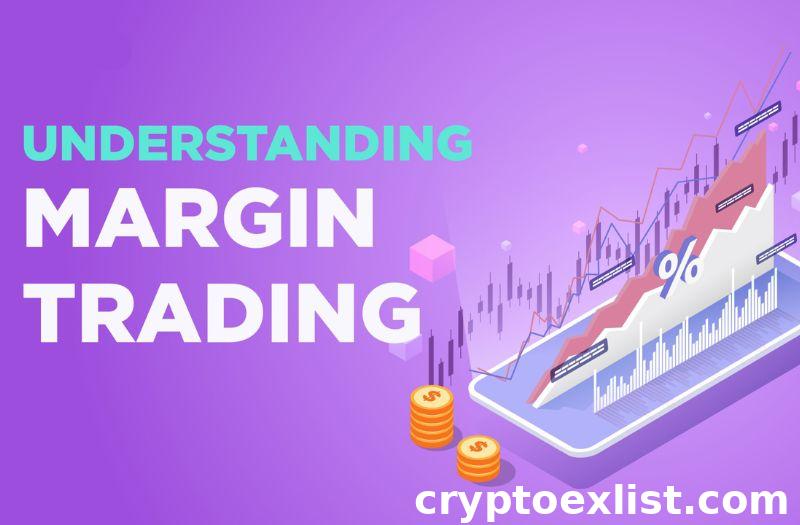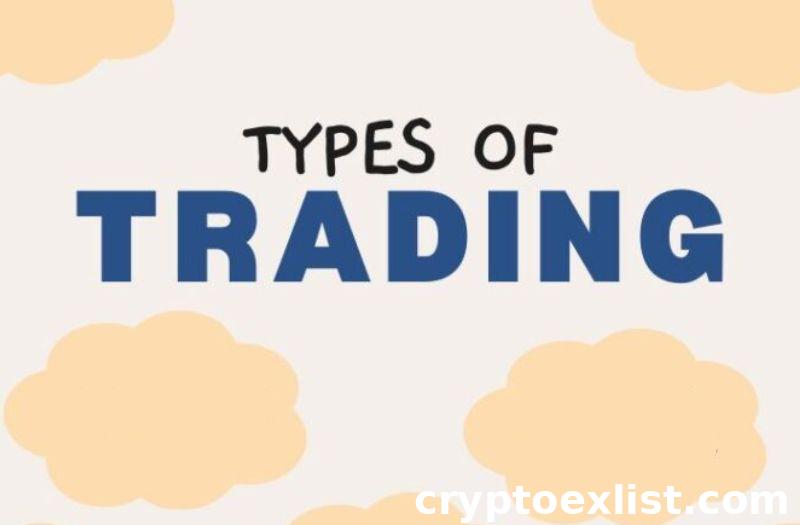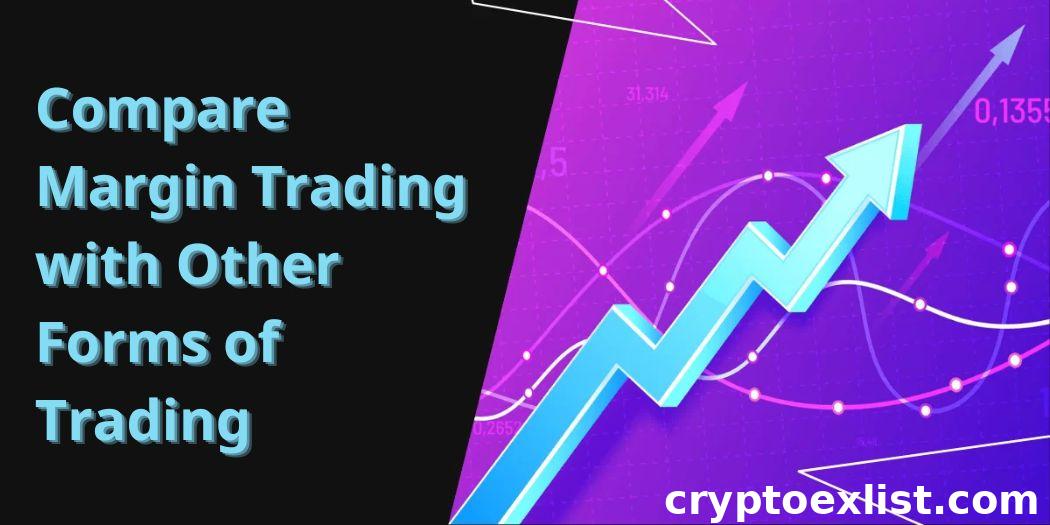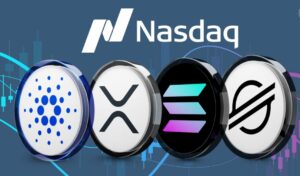
In the dynamic world of cryptocurrency and financial markets, traders have access to a variety of strategies to grow their investments. Among these, margin trading stands out as a powerful tool for amplifying returns through borrowed capital. However, how does it stack up against other trading forms like day trading, swing trading, long-term investing, and options trading? This blog aims to help beginners navigate the differences between margin trading and other methods, so you can choose the approach that aligns best with your goals, risk tolerance, and trading style.
Understanding Margin Trading
Definition of Margin Trading
Margin trading allows traders to borrow funds to increase their buying power, enabling them to trade larger positions than their account balance would typically allow. In simple terms, it’s like using a loan to boost your potential profits, though it also comes with increased risk. This form of trading is popular among more experienced traders who are looking to leverage their assets for higher returns. By borrowing funds from a broker, traders can access more capital, but it’s essential to fully understand the risks involved, especially for newcomers in the crypto world.
How Margin Trading Works
The process of margin trading is relatively straightforward. Traders deposit an initial amount, known as collateral, into a margin account. Based on the amount of collateral, they can borrow additional funds from the exchange, such as Binance exchange, to open a larger position. The borrowed amount is then repaid with interest, and profits (or losses) are calculated based on the full trade size. If the market moves against the trader’s position, and the balance falls below a certain threshold, a margin call is triggered, requiring the trader to either deposit more funds or close their position to avoid liquidation.
Types of Margin Accounts
On platforms like Binance, traders can choose between different types of margin accounts. The most common types are isolated margin and cross-margin accounts. In an isolated margin account, the risk is limited to the margin allocated for a specific trade, meaning if the trade goes wrong, only that portion is at risk. In a cross-margin account, the entire account balance is used as collateral, providing more flexibility but also exposing the trader to higher risk if the market moves against them. Each type offers unique benefits depending on the trader’s risk tolerance and strategy, making it important to choose the right one for your needs.

Overview of Other Trading Forms
Day Trading
Day trading is a short-term trading strategy where positions are opened and closed within the same trading day. The goal is to capitalize on small price movements in highly liquid markets like cryptocurrency or stocks. For beginners, day trading can be exciting but also highly challenging due to its fast pace and the need for quick decision-making. Traders must constantly monitor the market, analyzing real-time data, and utilizing tools such as technical indicators and charts. Binance offers a great platform for day trading in the crypto market due to its user-friendly interface and advanced trading tools.
Swing Trading
Swing trading is a medium-term strategy where traders aim to capture gains within a period of days or weeks. Unlike day trading, swing traders hold their positions overnight or longer, allowing them to benefit from larger price moves. This approach typically involves both technical and fundamental analysis to identify market trends and price patterns. Swing trading is considered less stressful than day trading and can be a great option for beginners who want to take a more relaxed approach without the need to constantly monitor the markets. On Binance, swing traders can take advantage of detailed charting tools to help identify the best entry and exit points.
Long-term Investing
Long-term investing focuses on holding assets for months or years, allowing investors to ride out market volatility and benefit from the long-term growth potential of the assets. This strategy requires patience and a strong understanding of the fundamentals behind the asset being held, such as cryptocurrencies like Bitcoin or Ethereum. Long-term investors typically aim to build wealth over time, making it less risky compared to day trading or swing trading. Binance provides a secure platform for long-term investors, with features like cold storage and a variety of coins to choose from.
Options Trading
Options trading allows traders to buy or sell the right (but not the obligation) to purchase an asset at a specific price within a set timeframe. This form of trading can be more complex compared to other strategies and is often used by more experienced traders to hedge against price movements or speculate on market direction. Binance also supports options trading, offering a range of contracts for traders looking to add this strategy to their portfolio. However, due to the complexity and potential risks involved, options trading is generally recommended for those with a solid understanding of market mechanics and risk management.

Comparing Margin Trading to Day Trading
Risk Levels and Volatility
Both margin trading and day trading involve significant levels of risk, but the nature of these risks differs. Margin trading amplifies both gains and losses because traders borrow funds to increase their position size, which introduces leverage into the equation. This means that even a small market movement can result in substantial losses or gains. On the other hand, day trading focuses on short-term price movements, which can also be highly volatile, especially in the cryptocurrency market. However, day traders typically close their positions before the market closes, avoiding the risks associated with holding assets overnight. For beginners, both trading strategies carry high risks, but margin trading, with its added leverage, tends to expose traders to greater potential losses.
Time Commitment Required
The time commitment for these two strategies varies significantly. Day trading is highly time-intensive, as traders need to monitor the market constantly, often for hours each day, looking for opportunities to enter and exit trades within the same day. It requires focus, quick decision-making, and the ability to react swiftly to market changes. In contrast, margin trading doesn’t always require such a dedicated schedule. Traders can open positions and hold them for longer periods, depending on market conditions and personal strategies. This flexibility may appeal to those who can’t commit to full-time trading but still want to take advantage of leverage to amplify their trades.
Profitability Potential
Both margin trading and day trading offer high profitability potential, but they also come with the risk of significant losses. In margin trading, the use of borrowed funds can magnify profits when the market moves in the trader’s favor. However, it also increases the risk of liquidation if the market turns against the trader. Day trading, while potentially profitable through frequent trades and small gains, can lead to heavy losses if market conditions are not properly analyzed or if trades are rushed. The profitability of each strategy depends on the trader’s skill, risk management techniques, and market conditions, making both options potentially rewarding but also very risky for beginners.
Comparing Margin Trading to Swing Trading
Holding Periods
One of the primary differences between margin trading and swing trading lies in the holding periods. In margin trading, positions are often held for short to medium durations, with traders borrowing funds to increase their position size. These trades can last anywhere from a few minutes to several days, depending on the market conditions and the trader’s strategy. Conversely, swing trading is more focused on capturing gains over a longer time frame, typically holding positions for days, weeks, or even months to take advantage of broader market trends. Swing traders are less concerned with short-term volatility, aiming to benefit from larger price movements over time. This makes swing trading a more passive approach compared to the more active nature of margin trading.
Capital Requirements
Capital requirements in margin trading are influenced by the use of leverage, which allows traders to open larger positions with less capital. This ability to borrow funds can be both a blessing and a risk, as while it increases profit potential, it also amplifies losses. Binance’s margin trading platform allows users to trade with different leverage levels, making it appealing for those looking to maximize returns with limited initial capital. On the other hand, swing trading typically doesn’t involve leverage, so traders rely more on their own capital. While the lack of leverage may limit the size of potential profits, it also reduces the risk of losing more than your initial investment. Swing trading may require more upfront capital since traders are not borrowing, but the risk is more contained.
Market Analysis Techniques
The market analysis techniques used in margin trading and swing trading also differ. Margin traders often rely heavily on technical analysis, utilizing charts, indicators, and patterns to identify short-term price movements and optimal entry/exit points. Timing is crucial in margin trading due to the use of leverage, making real-time analysis essential. In contrast, swing traders combine both technical and fundamental analysis. They look for broader market trends, price cycles, and key events that could influence asset prices over a longer time frame. Swing traders often rely on daily or weekly charts, focusing on indicators like moving averages and support/resistance levels, while also paying attention to market fundamentals such as news events and economic indicators.

Comparing Margin Trading to Long-term Investing
Investment Goals
Margin trading and long-term investing cater to very different investment goals. Margin trading is typically focused on short- to medium-term gains, with traders aiming to capitalize on quick market movements by borrowing funds to increase their position size. The goal is to amplify profits in a shorter period, often requiring more active participation in the market. On the other hand, long-term investing is all about patience and building wealth over time. Long-term investors are more focused on the gradual growth of their assets, investing in reliable projects or stocks they believe will appreciate steadily over months or years. Binance spot trading is often favored by long-term investors because it allows users to buy and hold cryptocurrencies without the added risks of leverage.
Risk Tolerance
Risk tolerance is another key differentiator between these two strategies. Margin trading inherently involves higher risk due to the use of leverage, which means that even small price movements can result in significant gains or losses. Traders need to manage the risks of liquidation and margin calls, and it is not uncommon for inexperienced traders to lose more than their initial investment. Long-term investing, on the other hand, tends to have lower short-term volatility. Long-term investors focus on the broader potential of an asset and are more willing to ride out short-term market dips with the expectation that the asset’s value will increase over time. While both strategies involve risk, margin trading is considered far more speculative and risk-intensive than long-term investing.
Impact of Market Fluctuations
The impact of market fluctuations differs greatly between margin traders and long-term investors. For margin traders, market fluctuations are everything. A sudden dip or spike can drastically affect a leveraged position, potentially triggering a margin call or liquidation. Therefore, margin traders are highly sensitive to short-term price movements and often react quickly to any changes in the market. In contrast, long-term investors take a more relaxed approach to market fluctuations. Since they are focused on long-term growth, short-term volatility doesn’t usually cause them to panic. Long-term investors often hold onto their assets through market ups and downs, confident in the long-term potential of their investments. This calmer, more strategic approach allows them to weather market corrections without the immediate pressure of potential liquidation.
Comparing Margin Trading to Options Trading
Complexity of Strategies
When it comes to complexity of strategies, margin trading is relatively straightforward compared to options trading. In margin trading, the primary focus is on borrowing funds to increase buying power, allowing traders to amplify their position in the market. Traders can choose between long and short positions based on market trends. In contrast, options trading involves more complex strategies like call and put options, and traders need to understand concepts like strike prices, expiration dates, and option premiums. Options trading also includes advanced strategies like straddles, strangles, and iron condors, which can be intimidating for beginners. Therefore, while both margin and options trading offer profit potential, options require a deeper understanding of market mechanics and strategic planning.
Risk Exposure
Risk exposure is a critical factor that differentiates margin trading from options trading. In margin trading, the risk comes primarily from leverage; borrowing funds means that small market fluctuations can lead to significant gains or losses. If the market moves against a trader’s position, they may face a margin call or liquidation, potentially losing more than their initial investment. On the other hand, options trading offers more flexibility in managing risk. When buying options, traders can limit their risk to the amount they’ve paid for the premium, giving them a capped downside. However, selling options, especially uncovered options, can expose traders to unlimited risk, making this a highly speculative form of trading. Overall, while both forms of trading carry risks, options trading offers more opportunities for risk control, particularly for those who focus on buying rather than selling options.
Leverage and Returns
Both margin trading and options trading offer traders the ability to leverage their capital, but the mechanics differ. In margin trading, leverage is directly tied to the funds borrowed from the exchange, such as Binance, allowing traders to increase their position size and potentially amplify their returns. However, this leverage also amplifies losses. In options trading, leverage is inherent in the options contract itself. Traders can control a large position with a relatively small upfront cost (the option premium). While this can lead to significant returns if the market moves in the desired direction, it also means that options can expire worthless, leading to a total loss of the premium paid. In terms of leverage and returns, both margin and options trading offer high profit potential, but the risks associated with each differ in terms of how losses and gains are structured.
Conclusion
When it comes to deciding between margin trading and other forms of trading such as day trading, swing trading, long-term investing, and options trading, the key lies in understanding your risk tolerance, financial goals, and the complexity of each method. While margin trading offers increased leverage and potentially higher returns, it also comes with amplified risks, especially if not managed properly. On the other hand, more conservative approaches like long-term investing focus on gradual growth with less volatility, while day trading and options trading provide unique opportunities for high returns with varying degrees of risk. By carefully weighing the pros and cons of each, you can craft a strategy that suits your individual trading journey and helps you achieve your financial objectives.























